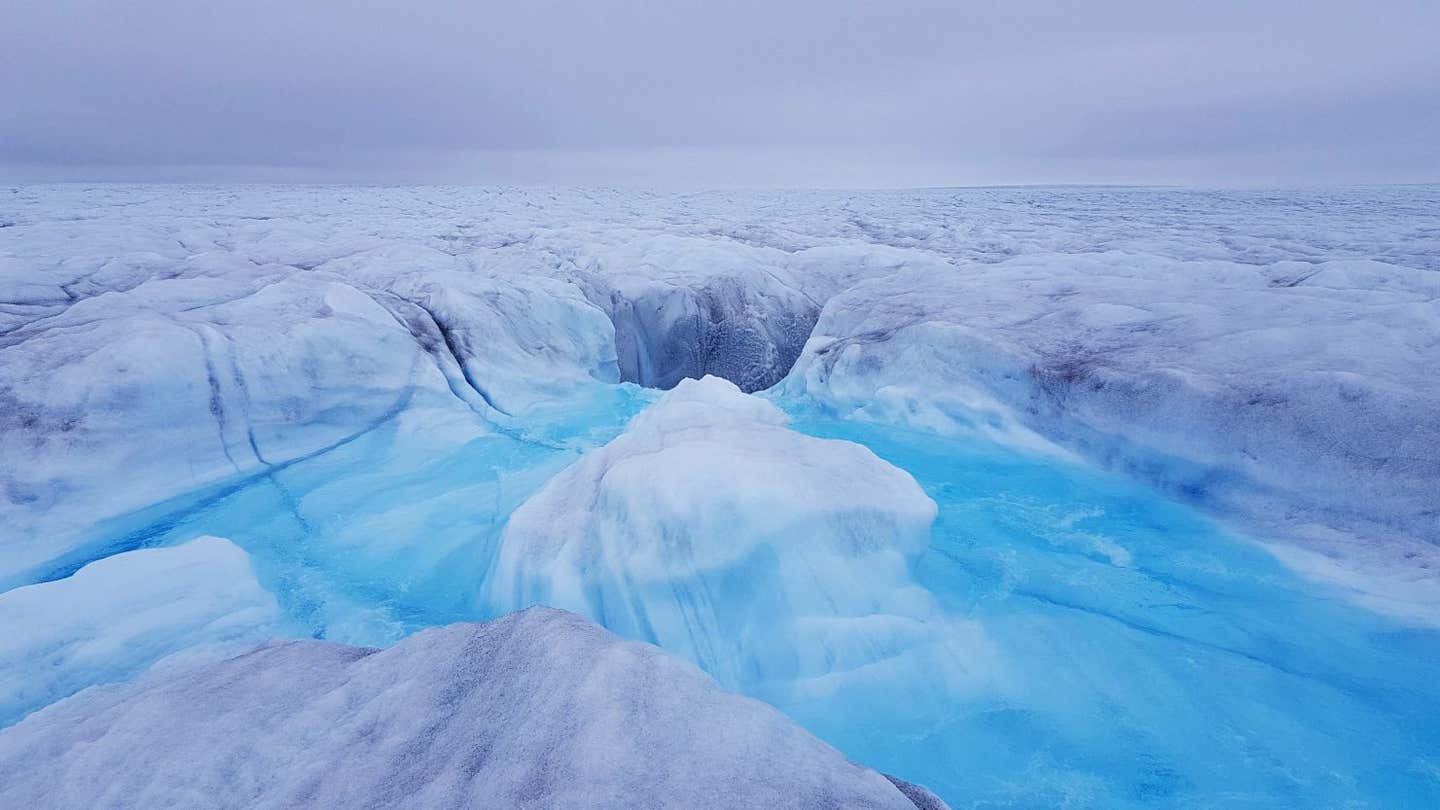Satellites deliver first picture of Greenland Ice Sheet melting
Combining data from CryoSat-2 and ICESat-2 satellites reveals alarming Greenland Ice Sheet thinning, advancing climate change tracking.

Discover how satellite collaboration unveiled dramatic Greenland Ice Sheet losses, reshaping climate change monitoring and policy planning. (CREDIT: CC BY-SA 4.0)
The Greenland Ice Sheet’s fate is intricately tied to the global climate crisis. Melting ice contributes to rising sea levels, disrupted weather patterns, and shifts in ocean currents—impacting ecosystems and communities worldwide. Tracking these changes requires precise and continuous measurements, and satellite technology has become a cornerstone of this effort.
Recently, researchers from Northumbria University collaborated with an international team to combine data from CryoSat-2 and ICESat-2, two satellites from ESA and NASA. These satellites employ different technologies to measure the ice sheet’s thickness.
CryoSat-2 uses radar, capable of penetrating clouds but requiring adjustments for subsurface effects. ICESat-2, on the other hand, relies on lasers that reflect directly off the surface but struggle in cloudy conditions. Together, they form a complementary system, filling gaps in each other’s data.
A study published in Geophysical Research Letters confirmed the synergy between these missions. Measurements from CryoSat-2 and ICESat-2 aligned to within 3%, a breakthrough in polar science.
This finding enables scientists to produce more accurate estimates of ice sheet volume and mass changes by integrating both datasets. It also assures continuity; should one mission fail, the other can maintain the critical record of ice changes.
Between 2010 and 2023, the Greenland Ice Sheet thinned by an average of 1.2 meters. However, near its edges, thinning exceeded five times that rate, averaging 6.4 meters. The outlet glaciers, which channel ice into the ocean, exhibited the most extreme changes.
At Jakobshavn Glacier in west-central Greenland, thinning peaked at 67 meters, while Zachariae Isstrøm in the northeast reached 75 meters. Across the 13-year period, the ice sheet lost 2,347 cubic kilometers of ice—enough to fill Lake Victoria in Africa.
These losses were not evenly distributed. Exceptional melt years, like 2012 and 2019, saw annual losses exceeding 400 cubic kilometers, driven by extreme summer temperatures. Such events amplify the ice sheet’s impact on global ocean circulation and weather systems, underlining the urgency of understanding these dynamics.
Related Stories
The groundbreaking collaboration was made possible by the Cryo2ice campaign, initiated in 2020. This ESA-NASA partnership aligned CryoSat-2’s orbit with ICESat-2, enabling near-simultaneous radar and laser measurements over the same regions. This synchronization has opened unprecedented opportunities for tracking ice and snow depth with remarkable precision.
“CryoSat-2 and ICESat-2 provide a consistent picture of Greenland’s changes,” said Thorsten Markus, NASA’s ICESat-2 project scientist. “Their complementary measurements allow us to fully exploit their strengths and create a more comprehensive understanding of ice dynamics.”
These advancements not only enhance scientific knowledge but also provide actionable data for policymakers. As ice loss is a major driver of sea level rise, such precise monitoring informs strategies to mitigate and adapt to climate impacts.
Tommaso Parrinello, ESA’s CryoSat Mission Manager, emphasized the broader implications: “By aligning data from CryoSat-2 and ICESat-2, we’ve taken a significant step forward in understanding and mitigating climate impacts. This collaboration showcases the power of international partnerships in addressing global challenges.”
The study highlights how satellite observations advance our ability to predict future changes. CPOM, the UK’s Centre for Polar Observation and Modelling, played a central role in this research.
Funded by the National Environment Research Council, CPOM uses satellite data and numerical models to monitor and predict polar ice and ocean dynamics. By leading international assessments, CPOM helps policymakers worldwide plan for sea level rise and climate change.
Lead author Nitin Ravinder expressed enthusiasm about the findings: “Discovering the close agreement between CryoSat-2 and ICESat-2 motivates us to integrate their datasets for improved estimates. This is incredibly valuable for the scientific community and decision-makers alike.”
The research underscores the importance of continuous monitoring as polar ice loss accelerates. Sustaining and enhancing satellite missions like CryoSat-2 and ICESat-2 remains crucial for capturing the full picture of climate-induced changes.
The collaboration’s success also sets the stage for future missions, such as CRISTAL, which will further refine our understanding of polar ice dynamics.
As the Greenland Ice Sheet continues to melt, its far-reaching effects ripple across the globe. Accurate, up-to-date data on these changes not only deepens our understanding but also equips humanity to confront the challenges posed by a warming planet.
Note: Materials provided above by The Brighter Side of News. Content may be edited for style and length.
Like these kind of feel good stories? Get The Brighter Side of News' newsletter.
Joshua Shavit
Science & Technology Writer | AI and Robotics Reporter
Joshua Shavit is a Los Angeles-based science and technology writer with a passion for exploring the breakthroughs shaping the future. As a contributor to The Brighter Side of News, he focuses on positive and transformative advancements in AI, technology, physics, engineering, robotics and space science. Joshua is currently working towards a Bachelor of Science in Business Administration at the University of California, Berkeley. He combines his academic background with a talent for storytelling, making complex scientific discoveries engaging and accessible. His work highlights the innovators behind the ideas, bringing readers closer to the people driving progress.



